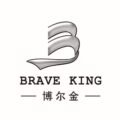
Laser Engraving technology, as an efficient and precise method of marking, has been widely adopted in the food and beverage packaging industry in recent years. It not only enhances product traceability and anti-counterfeiting capabilities but also significantly improves production efficiency and environmental protection. This article explores the practical applications of laser marking in this industry and its numerous benefits.
Introduction to Laser Engraving Technology
Laser marking utilizes a high-energy density laser beam to mark the surface of objects. Through photochemical and photothermal effects, the laser can create permanent marks on the material’s surface. Compared to traditional methods like inkjet printing and label attachment, laser marking offers advantages such as no consumables, no pollution, high durability, and high precision.
Practical Applications in Food and Beverage Packaging
1. Production Date and Expiry Date Marking
Marking production dates and expiry dates is essential in the food and beverage packaging industry. Laser marking machines can quickly and clearly engrave date information on various packaging materials, such as cartons, plastic bottles, and metal cans. Unlike traditional inkjet printing, laser marking is permanent and resistant to being erased or tampered with, enhancing product safety and consumer trust.
2. Barcodes and QR Codes
Laser Engraving technology can imprint complex barcodes and QR codes on packaging, facilitating product tracking and management. By scanning these codes, manufacturers can track production batches, distribution processes, and sales conditions in real-time. This improves supply chain transparency and allows for quick product recalls in case of quality issues, minimizing losses.
3. Anti-Counterfeiting Marks
Laser marking can generate difficult-to-replicate anti-counterfeiting marks, such as micro-text, intricate patterns, and invisible marks. These anti-counterfeiting features effectively prevent the circulation of counterfeit products, protecting brand reputation and consumer rights. Anti-counterfeiting marks are especially crucial in the high-end food and beverage market.

Advantages of Laser Engraving Technology
1. Environmental Protection and Energy Saving
Laser Engraving uses no ink, chemicals, or labels during the marking process, thus producing no harmful waste. It is an environmentally friendly marking method that meets modern society’s demands for green production. Additionally, laser marking equipment has low energy consumption and stable long-term operation, further saving energy costs.
2. High Efficiency and Precision
Laser marking is fast and can meet the demands of mass production. The laser beam has a very small diameter, allowing for marking with micron-level precision, ensuring the clarity and consistency of the markings. This is particularly useful for small packaging and complex pattern marking in the food and beverage industry.
3. Wide Range of Applicable Materials
Laser marking technology is suitable for various materials, including paper, plastic, metal, glass, and ceramics. Whether it’s soft packaging or hard packaging, flat surfaces or curved surfaces, laser marking can easily handle them. This provides food and beverage companies with more packaging design options and marking flexibility.
Future Developments in Laser Engraving Technology
With technological advancements, laser marking technology continues to evolve. In the future, we can expect progress in the following areas:
1. Higher Marking Speed
Future laser marking equipment will further enhance marking speed to meet larger-scale production demands. New types of lasers and more efficient scanning systems will make the marking process faster, thereby improving overall production efficiency.
2. Higher Resolution
As consumer demand for exquisite packaging markings increases, laser marking equipment will aim to improve the resolution of markings. Ultra-high resolution markings will not only showcase more intricate patterns but also allow more information to be marked in smaller spaces.
3. Automation and Intelligence
Future laser marking equipment will integrate with intelligent manufacturing technology to achieve high levels of automation and intelligence. By seamlessly connecting with production lines, laser marking equipment will automatically identify products to be marked and perform precise marking, while real-time monitoring and management can be achieved through data networking.
4. Adaptability to New Materials
As new packaging materials continue to emerge, laser marking technology will also enhance its adaptability to new materials. Whether environmentally friendly materials or high-strength composite materials, laser marking will provide reliable marking solutions.
Conclusion
The application of Laser Engraving technology in the food and beverage packaging industry provides strong support for traceability and anti-counterfeiting. Its efficient, environmentally friendly, and precise characteristics not only enhance product safety and traceability but also bring significant economic benefits to enterprises. With continuous technological advancements, laser marking will play an increasingly important role in this industry, driving food and beverage packaging towards more intelligent and efficient directions.


